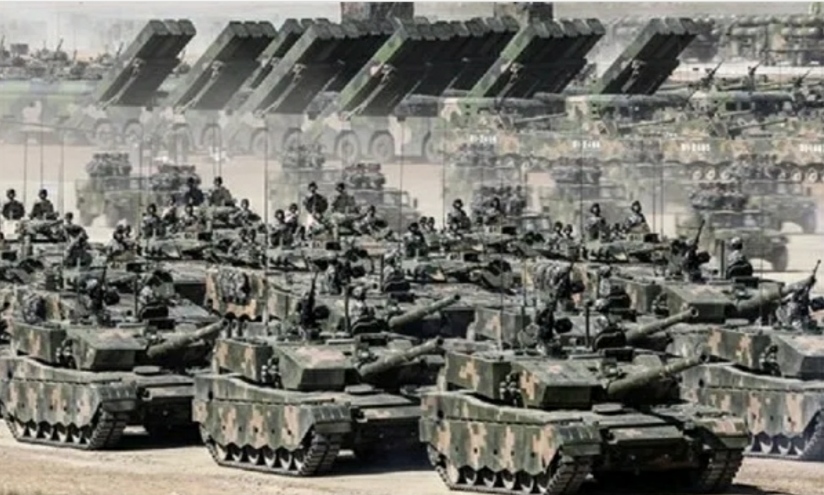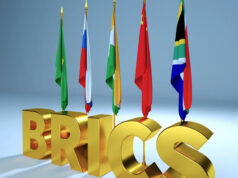Why PLA’s Mechanisation Strategy is Doomed to Fail in Ladakh?

Chinese T99 tanks on parade
By
Ranjit Singh
One of the major transformations in the Revolution of Military Affairs (RMA) of the PLA (People’s Liberation Army) is mechanization. Xi Jinping, China’s four hatted strongman, directed the PLA to modernise and mechanise the PLA by 2020. In a hurry to meet the deadline, the PLA carried out a complete makeover of the organizational structures creating Theatre Commands, Combined Corps and Combined Arms Brigades (CABs).
The CABs, copied from the Russian Motorised Brigades employed in Ukraine in 2014, envisaged a compact, nimble, mechanized and highly mobile force comprising of all arms fully integrated with other services, which could take to battle with minimal logistical support.
It was also PLA’s answer to meet its growing expeditionary aspirations especially across the Taiwan Straits as well as its expanding interests in thelOR (Indian Ocean Region) and Eurasia.
The Western Theatre Command, responsible for LAC along the 3,488 km long boundary with India, also implemented the CAB (Combined Arms Brigade) model. Comprising 76 and 77 Combined Corps (CCs) each with six CAB brigades and six support brigades, this force located in the plains and lower hills of Gansu, Qinghai and Yunnan provinces is the offensive element of the Western Theatre Command troops trained to fight a mechanized battle in the Tibetan plateau.
The resident force, essentially the Xinjiang Military District (XMD) and the Tibetan Military District (TMD) comprise a mix of infantry and mechanized formations.
These Military Districts (MDs) are yet to convert from Divisions and Brigades to Combined Arms Brigade (CABs). Therefore they retain a profile of largely older equipment and structures.
While the Chinese press has been unabashedly churning out propaganda pieces showing modern tanks like T-99A2 and VT15 light tanks as well as PLZ 181 long range howitzers firing and training on the Tibetan plateau, the major equipment profile continues to be the older T-96 tank and the ZBD-97 series of Infantry Combat Vehicles (ICVs) with towed artillery guns.
The Terrain in Ladakh
A study of the 872 km long LAC in Ladakh is essential to understand the conduct of operations. While the area on Chinese side of the LAC is open flat and tankable, the same is not true on the Indian side.
The LAC is generally aligned along the watershed from North to South ranging from heights of 17,000 ft and tapering down to 11,000 ft as we come closer to Demchok. Except for Depsang plains and the ChipChap Valley floor in the North, which provides for corridors to employ mechanized forces, there are very few tankable corridors along the rest of the LAC.
Therefore, initial break in operations call for capture of the watershed and the high ridge lines that dominate the landscape with observation and fire. Once the watershed is breached, the next major obstacle is the Shyok River – Indus River alignment which poses a challenge to the mechanized forces as they are restricted and channelized by limited crossing areas depending on the depth, current and width of the water in the rivers at that point in time.
Once the river is crossed, the mechanized forces need to again climb the shoulders of the river valley on own side before reaching the plains. In the area along the Shyok River, no mechanized operations are possible beyond the DSDBO-Shyok River alignment.
Conduct of Operations
A broad study of the terrain would dictate that aside from a small area in the Depsang plains, the conduct of mechanized operations is severely constricted by the availability of corridors and space for maneuver.
In fact, if reports are to be believed about the use of presence of tanks and Infantry Combat Vehicles (ICVs) in the narrow river beds, these would be destroyed piecemeal and systematically by skilful placement of anti-tank weapons, mines and own mechanized forces. These narrow corridors are killing fields for tank hunting teams and well sited anti-tank guided missiles (ATGMs). In short, the profile of the LAC in Ladakh is not suited for large scale employment of mechanized forces.
The obvious question that arises is, why has PLA not realized the inefficacy of mechanized operations in this sector? PLA Concept of Warfighting
The PLA concept of warfighting is driven by two major precepts: System Of System Operations (SOSO) and Integrated Joint Operations (IJO).
In layman terms, SOSO envisages degradation and destruction of the five major systems that a modern army employs on the battlefield, viz, Intelligence, Logistics, Firepower, Command & Control and Space. While Intelligence systems comprise the eyes like UAVs (Unmanned Aerial Vehicle), Drones etc.
and ears like communication towers, nodes and radars and Logistics systems like ammunition dumps, petroleum depots, supply depots are in the rear of the Tactical Battle Area (TBA), the Firepower systems like missiles, guns, aircraft, attack helicopters etc are located across the TBA alongwith the Command & Control headquarters.
The PLA intends to use their newly created PLA Rocket Force and PLA Strategic Support Force to neutralize and degrade these systems of the adversary to “shape” the battlefield before commencing physical attacks.
The physical attacks are launched by an overwhelming use of firepower, in an integrated manner, employing PLAAF (People’s Liberation Army Air Force) and PLARF (People’s Liberation Army Rocket Force) resources to pulverize the objectives.
The reorganization of the PLA into CABs has ensured an overwhelming reliance on firepower prior to launch of attacking forces. The idea is to close in as far as possible to the enemy under cover of fire, dismount from the ICVs (infantry combat vehicles) and simply mop up the objectives.
The PLA does not envisage physical attacks by its troops like the Indian Army in treacherous mountains of Kargil or the deliberate and slow infantry led operations in the mountains in Arunachal Pradesh.
Therein lies the strength of the Indian Army and the folly of mechanized operations by the PLA in Ladakh and along the LAC. Let me elucidate.
What constrains the PLA?
First, mountains are not like the Steppes and flat plains of Europe. Russia could plan large scale maneuvers across hundreds of kilometres of flat tankable territory but fighting in high altitude areas with high peaks and extreme weather conditions is a huge challenge. Copying the Russian model will come at a cost in the jagged mountain tops and narrow corridors in Ladakh as well as the rocky cliffs and jungles of the North East.
Second, physical capture of territory is essential to claim victory. That means coming out of the ICVs (infantry combat vehicles) and fighting in the open. That gives a decided edge to a defender. For some strange reason, the PLA decided to give up its infantry as an arm in the belief that firepower will win the day. The thought of Han body bags going back home will spell the doom for the image and cult of invincibility woven around the PLA.
Third, mechanized forces are inherently logistics heavy. They require maintenance and repair, all of which needs specialized personnel and equipment to be located well forward as juxtaposed to light infantry, which is agile, short on logistics and adaptable to all kinds of terrain. In terms of cost, retaining heavy tanks and associated guns and equipment comes at a premium, because of reduced service life and need for infrastructure like workshops, spares and garages.
Fourth, mechanized forces cannot hold ground. They require close support of infantry to hold the ground that is overrun or captured. Along the Himalayan watershed, all operations require that mountain passes are first captured and then mechanized forces are inducted across these passes.
The challenge is that these roads in the mountains run along valleys and are dominated by heights on either side. Unless the heights astride these axes are held by PLA troops, tanks and ICVs are highly vulnerable. Just one landslide or a boulder can block a highway or road in these valleys.
Once lined up they are mincemeat for India’s superior airpower and attack helicopters.
Fifth, while the PLA has gone for firepower in a big way, reinforcing their units with long range artillery at each level, the efficacy of firepower in mountains especially against well-coordinated defenses is suspect.
Not only would that expose their ammunition trains and large dumps which are essential to support these operations, it has a huge drain on the logistics chain that follows the fighting echelons. In sum, the PLA has taken a big risk and gamble by venturing into Ladakh.
An untested and “reverse engineered” Russian strategy with Chinese characteristics portends doom for the PLA, should the escalation lead to a skirmish or war. It is no secret that Xi’s ‘top driven’ military strategy has left no space for any PLA commander to contest its efficacy.
That will never happen in the PLA. No wonder written orders had to be given that after every confrontational exercise, 90 percent of the points by the umpires and controllers will be negative or critical and only 10 percent will be positive.
For all its military might and superiority in technology, what will matter is the motivation, morale and will of the PLA soldier to come out from the shelter and cover of fire and metal and fight at close quarters. That is where the Indian Army will be more than a match. In the final analysis, the strategy of mechanization will require going back to the drawing board for the PLA in mountains. The cost in life and material is simply too big to risk its own survival.




